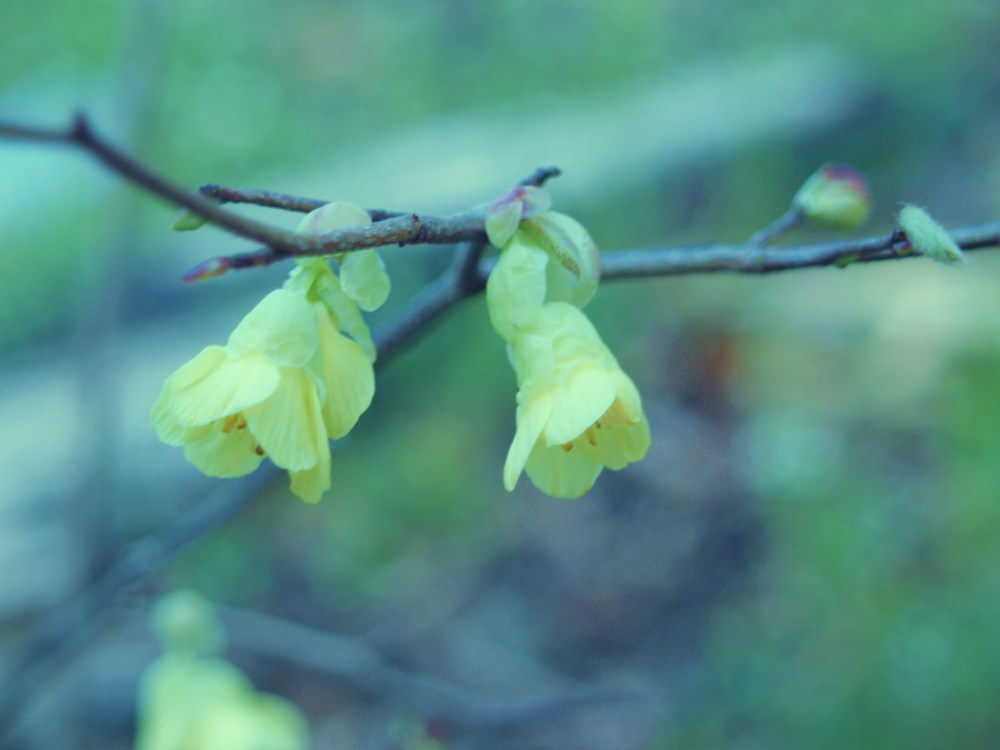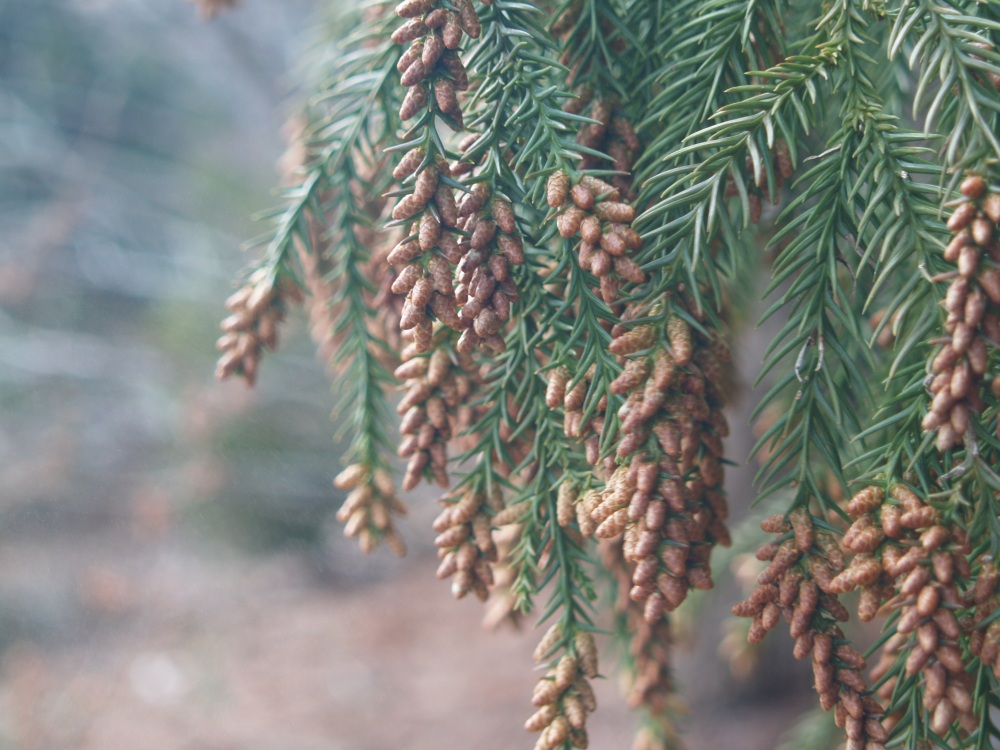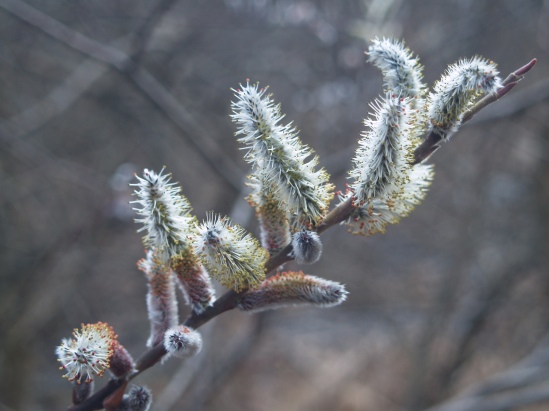
With snow and cold temperatures that lingered far too long into March there are fewer blooms in early April, but that will be remedied shortly, I am certain. With spring temperatures delayed, I can be satisfied for a while with snowdrops, witch hazels, and hellebores that display more abundant blooms by the day (above). But, without the distraction of magnolias, redbuds (Cercis canadensis) and winter hazels (Corylopsis pauciflora, below) there are other interests in the garden.
While spring allergies urge that I don’t stir up more pollen than is necessary, I cannot resist shaking branches of the Japanese cedars (Cyrptomeria japonica, below) as I walk past. I try my darnedest to stand upwind as brown clouds erupt from the abundant, small cones, but inevitably there are sneezes to come over the next hour. What a sad life this gardener leads to be so easily entertained.

In early spring the catkins of pussywillow (Salix gracilistyla ‘Variegata’, below) are blooming, with flowers that will soon be tipped in bright yellow pollen. When brought indoors through the winter, this is the time that stems are discarded, before they make too much of a mess, but in the garden this is not an issue.

I believe that if records for such things were kept, this pussywillow must be the widest spreading, and certainly the most unruly of its kind. Though it is a near impossibility to pace through the muck from one side of the shrub to the other, I’m certain that it must be thirty feet across. I’m told, and certainly it must be true, that most gardeners cut their pussywillows back annually for a more tidy appearance, and so that more new shoots are encouraged. Thus there are more catkins, and no doubt a more attractive shrub, but there are other details to be tended to in this garden, so it’s unlikely I’ll manage to get around to this.

While it is easy to disparage an indestructible shrub such as the pussywillow, the shrub is perfectly suited to the swampy conditions at the rear of the garden (which could possibly be slightly to the far side of the property line, though this should be whispered so that the neighborhood association is not alerted). Though I don’t proclaim this loudly, I visit the pussywillow too frequently through the late winter to be taken seriously when I hesitate to recommend it.
Just so you know, you’re not the only one who shakes pines and such just to see the cloud of pollen waft off. It’s a sickness, the same disease that makes one tap a snow laden branch or shake a just-over-the-hill blooming cherry.
I’ve suspected that this was a sign of simple mindedness, but I don’t intend to demean others who suffer the same affliction.